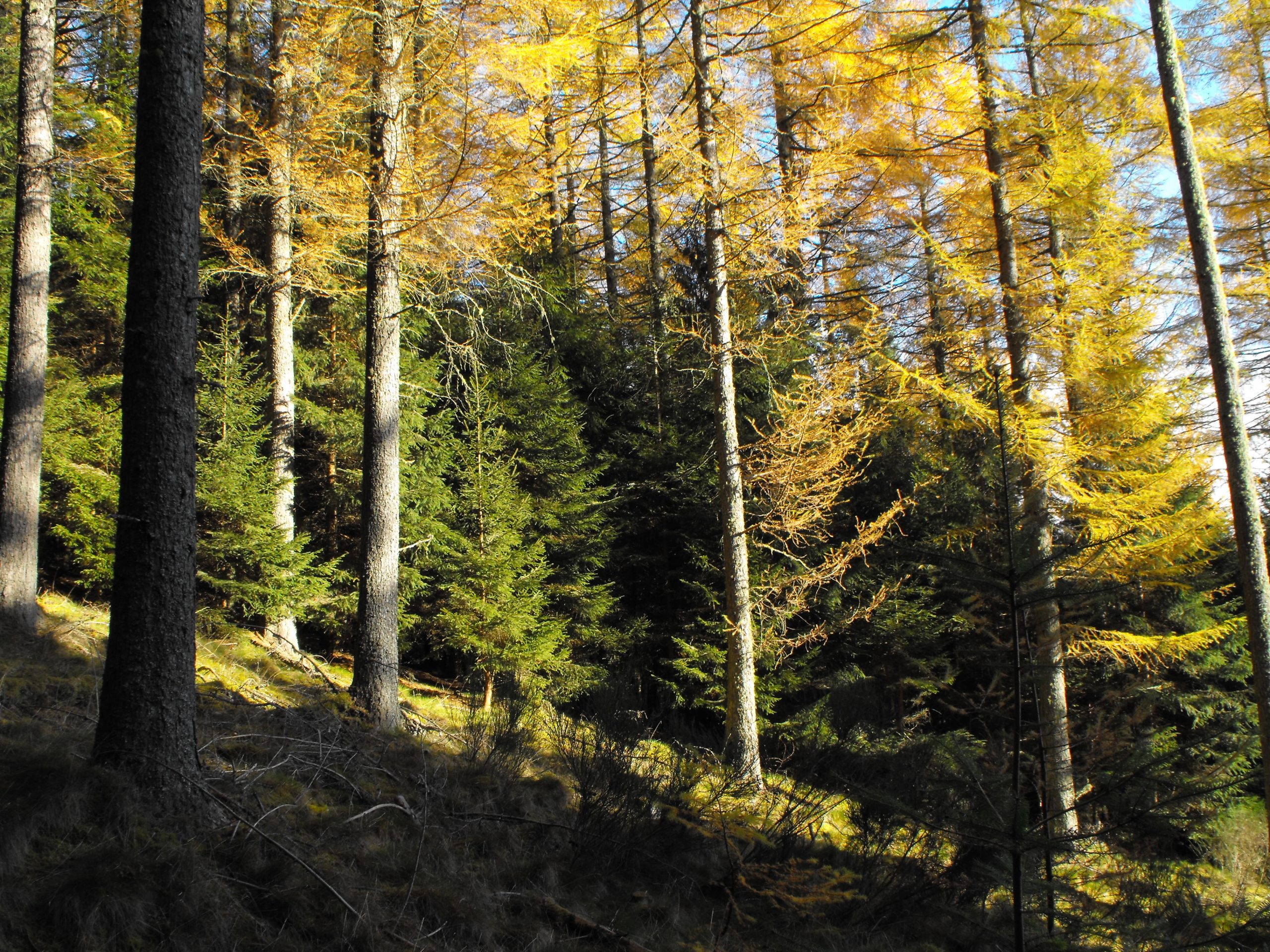A “Forest Development Type” is a long-term vision of how the species composition and structure of a forest stand is intended to develop.
The concept encourages greater use of mixed-species stands and a wider variety of stand structures. It also promotes better use of site adapted species and natural regeneration.
We have developed management tools which will help practitioners to use FDTs to diversify their forests and increase resilience.
FDTs can be used by policymakers, planners and forest managers aiming to increase the diversity of their forests.
The FDT concept is described by:

European larch with an understorey of Norway spruce. Using FDTs this would be FDT 2.4.2 ‘Larch with shade tolerant conifers.’
The system we have developed defines a number of FDTs, each one describing a target stand structure and composition, and with defined climate and site suitability. The development process has involved consultation and workshops with a range of stakeholders.
The Forest Development Type – Guide [PDF. 3.13mb] and Flashcards [PDF, 3.74mb] are now freely available to download.
As a specialised and bespoke document, it was not possible to make the Flashcards file accessible, but if you require it in an accessible format, please contact fdt.support@forestresearch.gov.uk
Guidance on how to use Forest Development Types to diversify existing forests is also now available.
Download Forest Development Types – Diversification [PDF, 1.01mb]
Please also email us with any comments or feedback.
The embedded video below explains the concept of Forest Development Types and their use in British forestry:
The work is funded by Forestry and Land Scotland, Forestry England and the Science and Innovation Strategy (SIS) for forestry in Great Britain.